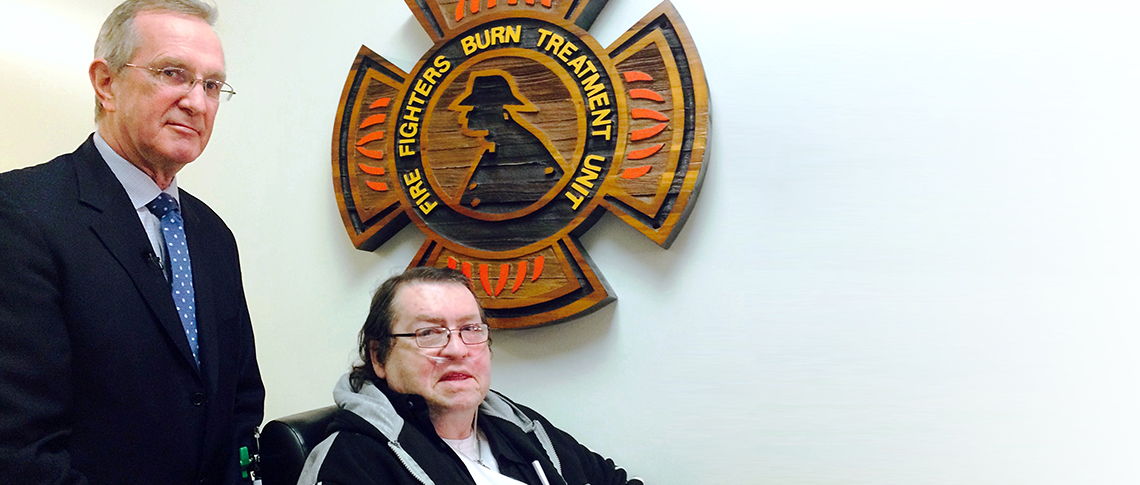
February 4, 2016

Dr. Edward Tredget, Director of the UAH Firefighters Burn Treatment Unit, supports Al Pombert, 70, who is sharing his story in the hopes of preventing others from smoking while using oxygen therapy.
Story and photo by Sharman Hnatiuk
It’s a painful lesson to share, but Al Pombert wants others to learn exactly why he found himself in the Firefighters Burn Treatment Unit at the University of Alberta Hospital (UAH) last Dec. 5 with burns to his face and head — all due to smoking a cigarette while on oxygen therapy.
“You can see the wounds of my mistake all over my face. I am the living example of what smoking on oxygen can look like,” says the 70-year-old.
Patients who receive home oxygen therapy are instructed not to smoke, be near a smoker, or allow smoking inside a home where the supplemental oxygen is in use.
Although he was told he could not smoke while on oxygen therapy, for years Pombert gambled with his safety, and the safety of those around him, by continuously lighting up.
“I was a bit of a rebel. I heard the warning but I thought it would never happen to me,” says Pombert, who has chronic obstructive pulmonary disease (COPD) and emphysema.
Over the past 10 years, the Firefighters Burn Treatment Unit at the UAH has treated more than 35 patients, predominantly seniors, with mild to severe burns on their face, hands and body as a result of smoking while on oxygen therapy.
“Smoking while using oxygen can cause very serious, permanent painful injuries that can require mechanical ventilation, skin graft surgeries and extensive hospital stays,” say Dr. Edward Tredget, Director of the UAH Firefighters Burn Treatment Unit.
“In some cases, we have seen patients die as a result of burns from an absolutely preventable injury.”
Normal air contains 21 per cent oxygen, while supplemental oxygen can contain up to 100 per cent oxygen, creating an environment in which fires can easily ignite and burn quickly. Once ignited, fires burn hotter and more rapidly in oxygen-rich surroundings. This increases the danger of serious burns on the head and face if smoking materials are brought toward the mouth, and burns on the remainder of the body if clothing ignites.
Pombert is sharing his story during Burn Awareness Week in Alberta — Jan. 31 to Feb. 6, 2016 — in the hope others don’t make the same mistake he did.
“I haven’t had a cigarette since the day I ended up in the burn unit,” says Pombert, who started smoking when he was nine years old.
“I’m still on the mend, but I got the message. I would never smoke with oxygen again, nor would I ever be around someone who did. I still have a few reasons to live for.”